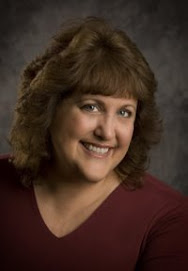 As the end of the year approaches, it’s time to take a personal inventory of what the year was like – what went well and what didn’t, where we succeeded and where we failed, what brought joy and what brought sorrow, and what we learned from it all. For me, this year was a tumultuous one, filled with highs and lows. The low points had to do with a lot of dental work; the highs revolved around work, writing, and relationships.
As the end of the year approaches, it’s time to take a personal inventory of what the year was like – what went well and what didn’t, where we succeeded and where we failed, what brought joy and what brought sorrow, and what we learned from it all. For me, this year was a tumultuous one, filled with highs and lows. The low points had to do with a lot of dental work; the highs revolved around work, writing, and relationships.The constant joy in my life is my family, and that held true for 2008. My husband and my two children are a never-ending source of love, happiness, and inspiration. At the end of each year with them, I can’t help feeling truly blessed for their presence in my life.
As for my business, I also couldn’t be more blessed. I had the honor of working for some truly great clients this year and am looking forward to continuing my work with many of them – along with some new voices - in 2009.
My writing has also been a source of joy and learning. I am privileged to be part of a creative and talented weekly writing group, and this year I had the honor of meeting some truly amazing writers during an artist residency at the Vermont Studio Center. I discovered the joy of blogging, sold a few articles, and reached the halfway point on my second novel. While I may not have completed as much as I would have liked, the first ten pages won an Editor’s Choice Award at the 2008 SDSU Writers’ Conference, and the remaining pages are shaping up into a presentable first draft.
In 2008, I went back to community college teaching after a ten-year hiatus. Surprisingly, I discovered how much I missed it and was lucky to have a group of students who were a pleasure to work with and taught me more than they’ll ever know.
And on November 4th, I felt tremendous pride in the American people for the ground-breaking change they brought to pass with the election of our first African-American president.
In all, it was a solid year, filled with achievement and wonder.
And now it’s time to look forward to 2009. I’m not big on resolutions, but I do believe in setting goals, even if they’re more generally focused on attitude and direction. For the coming year, I’ve decided to take a lesson from the Tao Te Ching by paying more attention to what is present in my life and learning to practice simplicity, patience, and compassion.
As Lao Tze says in Chapter 8 of the Tao, the roadmap for contentment lies in being like water, which nourishes without trying and is “content with the low places that most people disdain.” Lao Tze also gives some wonderful basic guidelines for daily life:
In dwelling, live close to the ground.
In thinking, keep to the simple.
In conflict, be fair and generous.
In governing, don't try to control.
In work, do what you enjoy.
In family life, be completely present.
When you are content to be simply yourself
and don't compare or compete,
everybody will respect you.
Some wise words to live by in 2009.
Happy New Year!
Some wise words to live by in 2009.
Happy New Year!














